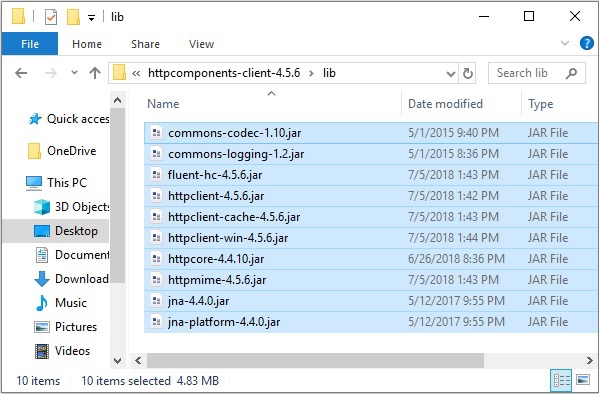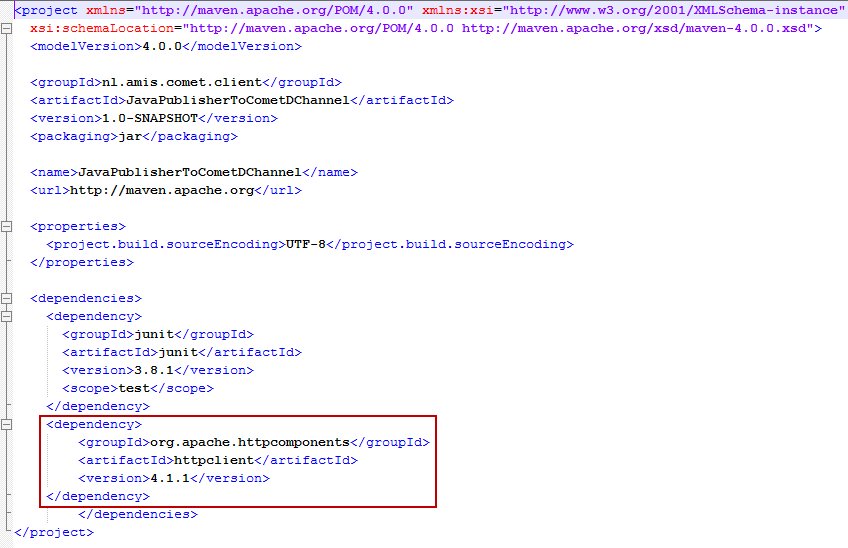The Hyper-Text Transfer Protocol (HTTP) is perhaps the most significant protocol used on the Internet today. Web services, network-enabled appliances and the growth of network computing continue to expand the role of the HTTP protocol beyond user-driven web browsers, while increasing the number of applications that require HTTP support.
Name Email Dev Id Roles Organization; Ortwin Glueck: oglueck -at- apache.org: oglueck: Emeritus PMC: Oleg Kalnichevski: olegk -at- apache.org: olegk: Committer, PMC. Preemptive Proxy Authentication with HTTP Tunnel / HTTPS Connection in Apache HttpClient 4.3.1. Java httpClient 4.3.6 basic Authentication with complete URI and scheme. Preemptive Authentication with HttpClient 4.3 and Solr 5. Hot Network Questions Iterative Radix-2 FFT in C. The Apache HTTP Server Project is an effort to develop and maintain an open-source HTTP server for modern operating systems including UNIX and Windows. The goal of this project is to provide a secure, efficient and extensible server that provides HTTP services in sync with the current HTTP standards. Question is specifically tagged apache-httpclient-4.x – Mohnish Jun 6 '18 at 16:07. This also works with Apache http client together with useSystemProperties – JonnyJD May 27 '19 at 12:44. Add a comment 1. Using -Dhttps.protocols=TLSv1.2 JVM argument didn't work for me. What worked is the following code. HttpClient Overview. The Hyper-Text Transfer Protocol (HTTP) is perhaps the most significant protocol used on the Internet today. Web services, network-enabled appliances and the growth of network computing continue to expand the role of the HTTP protocol beyond user-driven web browsers, while increasing the number of applications that require HTTP support.
Although the java.net package provides basic functionality for accessing resources via HTTP, it doesn’t provide the full flexibility or functionality needed by many applications. HttpClient seeks to fill this void by providing an efficient, up-to-date, and feature-rich package implementing the client side of the most recent HTTP standards and recommendations.
Designed for extension while providing robust support for the base HTTP protocol, HttpClient may be of interest to anyone building HTTP-aware client applications such as web browsers, web service clients, or systems that leverage or extend the HTTP protocol for distributed communication.
Documentation
Apache Httpclient Tutorial
- Quick Start - contains simple, complete examples of request execution with the classic, fluent and async APIs.
- Examples demonstrating some common as well as more complex use cases
Javadocs
API compatibility reports
Features
- Standards based, pure Java, implementation of HTTP versions 1.0, 1.1, 2.0
- Supports encryption with HTTPS (HTTP over SSL) protocol.
- Pluggable socket factories and TLS strategies.
- Transparent message exchanges through HTTP/1.1 and HTTP/1.0 proxies.
- Tunneled HTTPS connections through HTTP/1.1 and HTTP/1.0 proxies, via the CONNECT method.
- Basic, Digest, NTLMv1, NTLMv2, NTLM2 Session, SNPNEGO, Kerberos authentication schemes.
- HTTP state management and cookie support.
- Flexible connection management and pooling.
- Support for HTTP response caching.
- Source code is freely available under the Apache License.
Standards Compliance
HttpClient strives to conform to the following specifications endorsed by the Internet Engineering Task Force (IETF) and the internet at large:
- RFC 7230 - Hypertext Transfer Protocol (HTTP/1.1): Message Syntax and Routing
- RFC 7231 - Hypertext Transfer Protocol (HTTP/1.1): Semantics and Content
- RFC 7235 - Hypertext Transfer Protocol (HTTP/1.1): Authentication
- RFC 1945 - Hypertext Transfer Protocol – HTTP/1.0
- RFC 2817 - Upgrading to TLS Within HTTP/1.1
- RFC 2818 - HTTP Over TLS
- RFC 6265 - HTTP State Management Mechanism (Cookies)
- RFC 2396 - Uniform Resource Identifiers (URI): Generic Syntax
- Apache HttpClient Tutorial

- Apache HttpClient Resources
- Selected Reading
Using HttpClient, we can perform Multipart upload, i.e., we can upload larger objects insmaller parts. In this chapter, we demonstrate the multipart upload in HTTP client by uploading a simple text file.
In general, any multipart upload contains three parts.
Initiation of the upload
Uploading the object parts
Completing the Multipart upload
For the multipart upload using HttpClient, we need to follow the below steps −
Create a multipart builder.
Add desired parts to it.
Complete the build and obtain a multipart HttpEntity.
Build request by setting the above muti-part entity.
Execute the request.

Apache Http Client 4.5 Documentation
Following are the steps to upload a multipart entity using the HttpClient library.
Step 1 - Create an HttpClient object
The createDefault() method of the HttpClients class returns an object of the class CloseableHttpClient, which is the base implementation of the HttpClient interface. Using this method, create an HttpClient object −
Step 2 - Create a FileBody object
Apache Http Client 4 Example
FileBody class represents the binary body part backed by a file. Instantiate this class by passing a File object and a ContentType object representing the type of the content.
Step 3 - Create a MultipartEntityBuilder
The MultipartEntityBuilder class is used to build the multi-part HttpEntity object. Create its object using the create() method (of the same class).
Step 4 - Set the mode
A MultipartEntityBuilder has three modes: STRICT, RFC6532, and BROWSER_COMPATIBLE. Set it to the desired mode using the setMode() method.
Step 5 - Add various the desired parts
Using the methods addTextBody(), addPart() and, addBinaryBody(), you can add simple text, files, streams, and other objects to a MultipartBuilder. Add the desired contents using these methods.
Step 6 - Building single entity
You can build all these parts to a single entity using the build() method of the MultipartEntityBuilder class. Using this method, build all the parts into a single HttpEntity.
Step 7 - Create a RequestBuilder object
The class RequestBuilder is used to build request by adding parameters to it. If the request is of type PUT or POST, it adds the parameters to the request as URL encoded entity.

Create a RequestBuilder object (of type POST) using the post() method. And pass the Urito which you wanted to send the request it as a parameter.
Step 8 - Set the entity object to the RequestBuilder
Set the above created multipart entity to the RequestBuilder using the setEntity() method of the RequestBuilder class.
Step 9 - Build the HttpUriRequest
Build a HttpUriRequest request object using the build() method of the RequestBuilder class.
Step 10 - Execute the request
Using the execute() method, execute the request built in the previous step (bypassing the request as a parameter to this method).
Example

Following example demonstrates how to send a multipart request using the HttpClient library. In this example, we are trying to send a multipart request backed by a file.
Output
On executing, the above program generates the following output −
